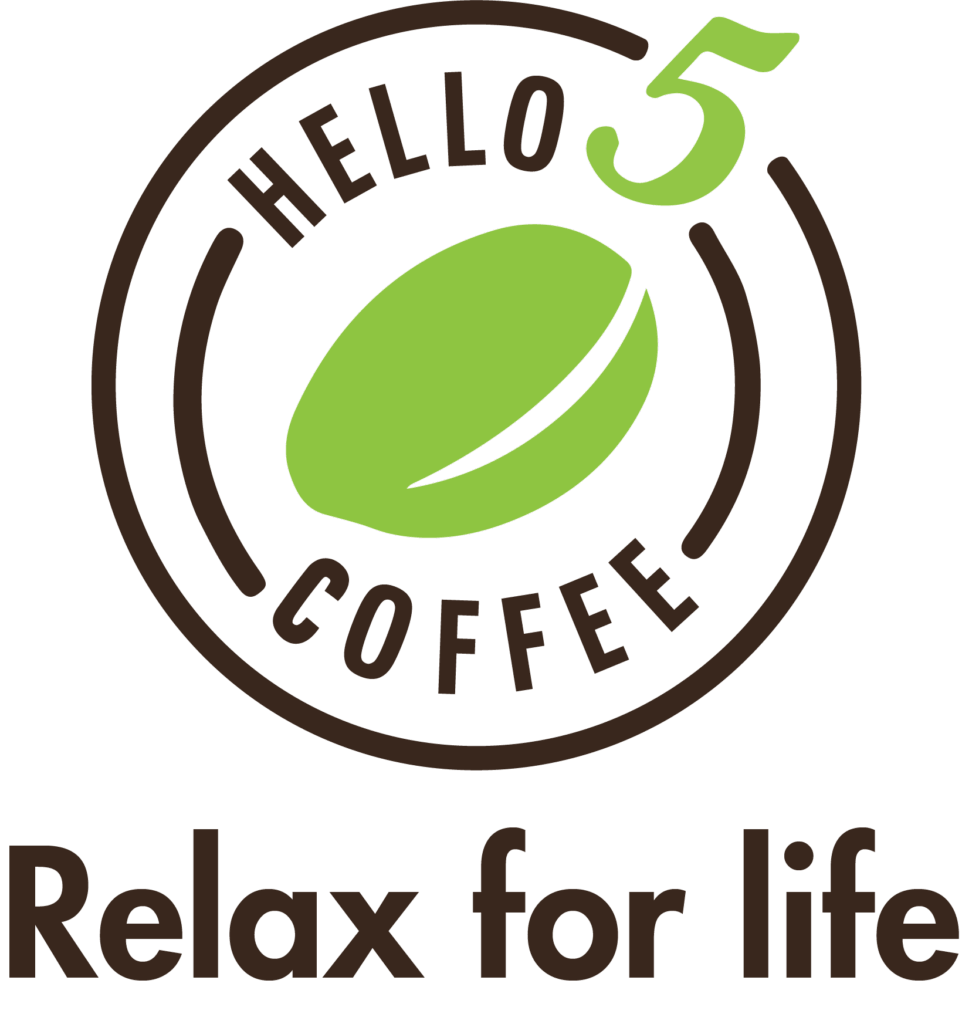When people first try Vietnamese coffee, the first reaction is often the same: it feels incredibly strong. A small glass of this dark, aromatic drink seems to pack more punch than a full mug of regular drip coffee. That perception is not just about taste—it is also tied to how much caffeine is actually in it. On average, a cup of Vietnamese coffee contains between 66 and 130 milligrams of caffeine in just 60 to 120 milliliters of liquid. To put that into perspective, the caffeine density per ounce is much higher than what you would find in most other brewing methods.
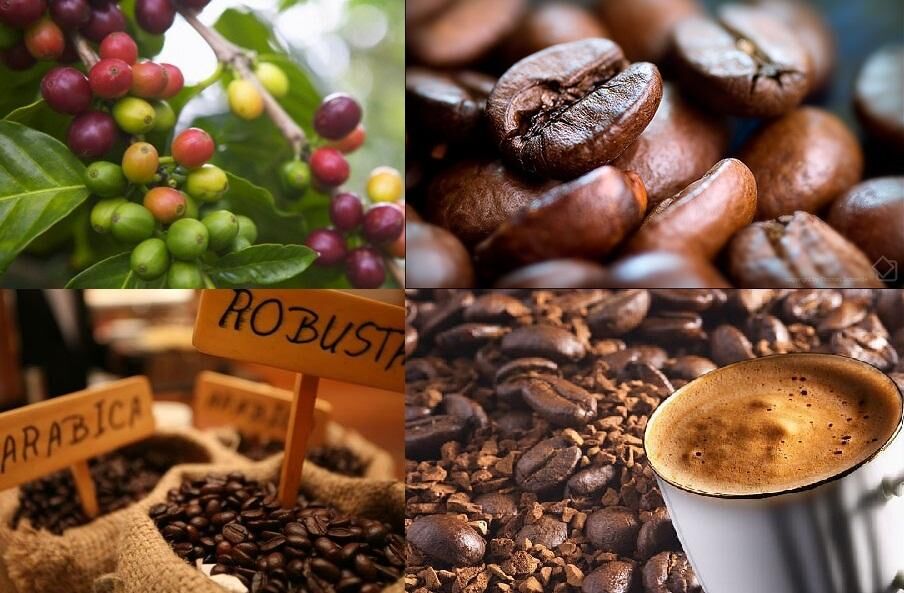
But numbers only tell part of the story. To really understand why Vietnamese coffee feels so powerful, we need to look at the type of beans it uses, the way it is brewed, and how it compares to other styles of coffee around the world.
Why Vietnamese Coffee Tastes Stronger?
The foundation lies in the beans. Vietnam is the world’s largest producer of Robusta coffee, a variety that naturally carries almost twice the caffeine of Arabica. While Arabica beans average around 1.5 percent caffeine by weight, Robusta beans contain roughly 2.5 to 2.7 percent. That difference alone makes every cup of Vietnamese coffee more stimulating.
The brewing method adds another layer. Instead of large drip machines or quick espresso shots, Vietnamese coffee is prepared using a small metal filter called a phin. Hot water drips slowly through a dense layer of finely ground coffee, extracting a concentrated liquid over the course of four to five minutes. Because the coffee-to-water ratio is high—often much stronger than French press or pour-over—the resulting drink is thick, bold, and rich in caffeine.
Roasting style also plays a role. Many Vietnamese roasters favor a dark roast, which highlights deep, smoky flavors and enhances the perception of intensity. Combined with Robusta’s natural bitterness, the cup feels heavier and more powerful than its actual volume might suggest.
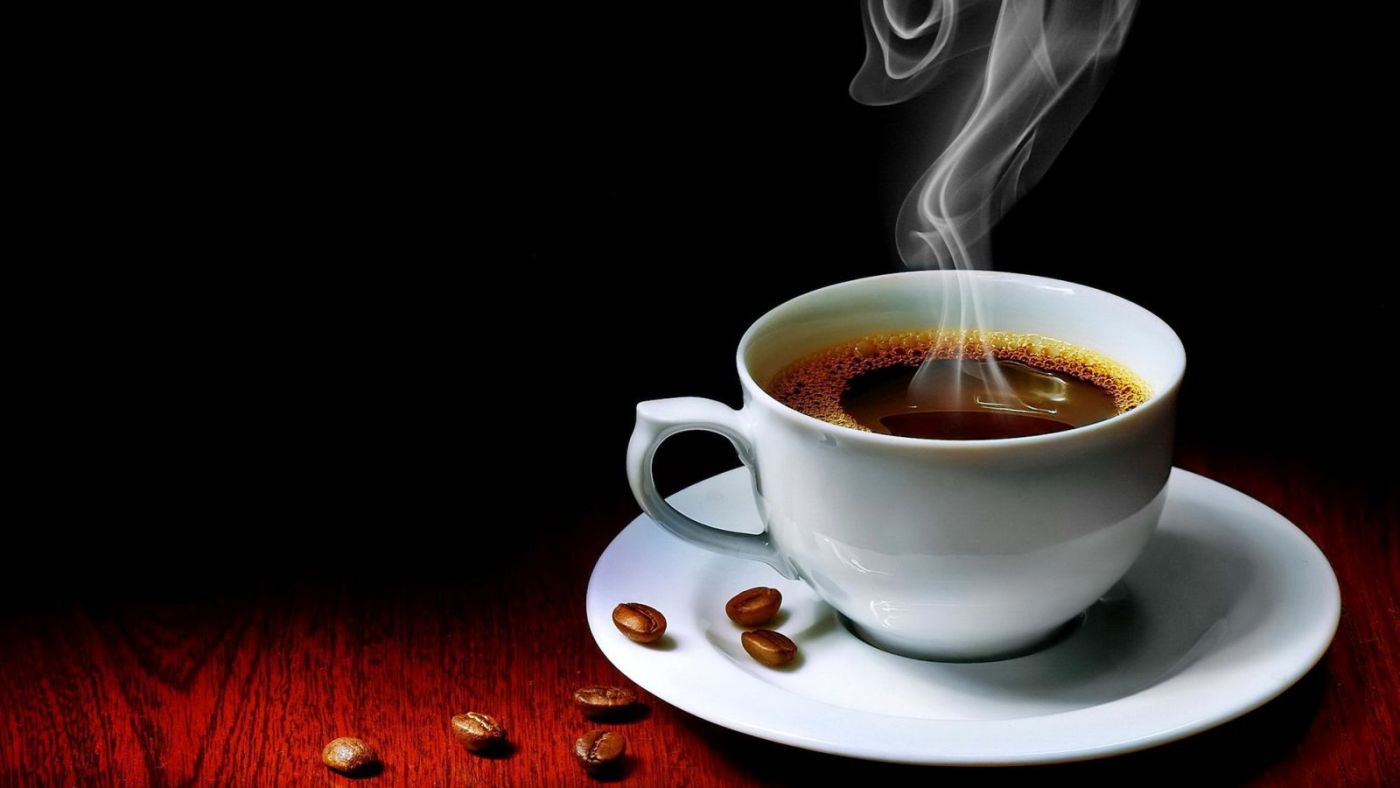
Read more: Why is Vietnamese coffee so good?
How Much Caffeine Is Really in a Cup?
A typical serving brewed with a phin contains between 66 and 130 milligrams of caffeine, depending on the size of the filter, the grind, and the bean blend. Most phin servings are small, about two to four ounces, which means each sip delivers a highly concentrated dose.
For comparison, an 8-ounce cup of drip coffee usually contains between 80 and 120 milligrams of caffeine, spread across a much larger volume of water. A single espresso shot has about 75 milligrams, though it is only one ounce in size. Meanwhile, cold brew coffee can range from 197 to over 200 milligrams in a 16-ounce serving.
What makes Vietnamese coffee stand out is not necessarily that it has the highest total caffeine, but that it delivers so much caffeine in such a small, dense cup. This is why many people feel more alert after drinking even one small serving of cà phê phin.
Why Does It Feel Even Stronger Than the Numbers Suggest?
The sensation of strength is influenced not only by caffeine but also by taste. Robusta beans carry more bitterness and a heavier mouthfeel than Arabica, and that bitterness is often associated with intensity. In other words, your brain interprets the flavor as “stronger,” even when the caffeine levels are similar to other drinks.
The slow extraction process also plays a role. Because the phin does not rush the brew, nearly all soluble compounds—including caffeine—are pulled into the cup. The result is a drink that feels richer, denser, and more stimulating than many other brewing styles.
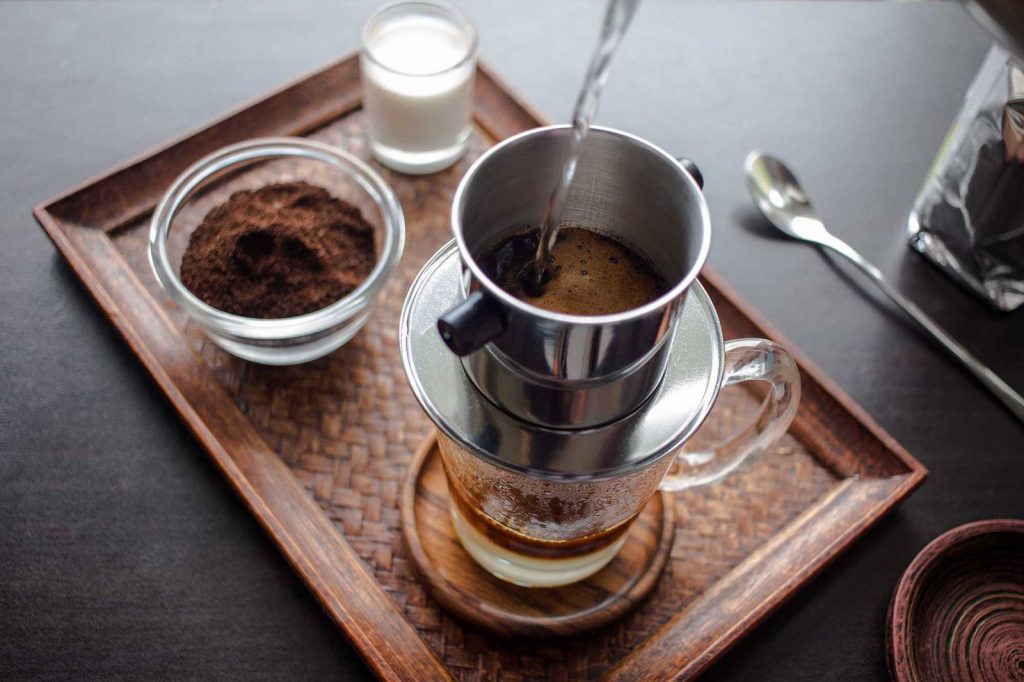
Read more: How to make Vietnamese coffee at home
Comparing Vietnamese Coffee to Other Types
If we compare ounce for ounce, Vietnamese coffee is stronger than drip coffee and close to espresso in terms of concentration. However, because it is usually consumed in a small glass, the total caffeine might be similar to a small American coffee. Cold brew technically surpasses both in caffeine content, but its chilled, diluted nature makes it feel smoother and less aggressive.
So while Vietnamese coffee does not necessarily top the charts in raw caffeine, it consistently feels stronger to drinkers because of its concentration, bean type, and flavor profile.
| Type of Coffee | Caffeine Content | Size of Cup |
Caffeine per serving
|
| Vietnamese Coffee | 33 mg/oz | 2–4 oz | 66–130 mg |
| Espresso Coffee (Single Shot) | 75 mg/Shot | 1–2 Shots | 75–150 mg |
| Pour Over | 12–20 mg/oz | 8 oz | 90–160 mg |
| Cold Brew | 12–13 mg/oz | 16 oz | 197–213 mg |
| French Press | 13–17 mg/oz | 8 oz | 100–137 mg |
| Drip Coffee | 8–15 mg/oz | 8 oz | 65–120 mg |
| Instant Coffee | 8–10 mg/oz | 8 oz | 80–120 mg |
How Much Is Safe to Drink?
Health experts, including the U.S. Food and Drug Administration, generally recommend a daily caffeine intake of no more than 400 milligrams for healthy adults. This is roughly equivalent to three or four cups of Vietnamese coffee. Drinking more than that can lead to common side effects such as restlessness, difficulty sleeping, or increased heart rate.
For most people, one or two servings per day is both safe and enjoyable. Vietnamese coffee can be a perfect morning boost or an afternoon pick-me-up, as long as it is balanced with hydration and mindful consumption.
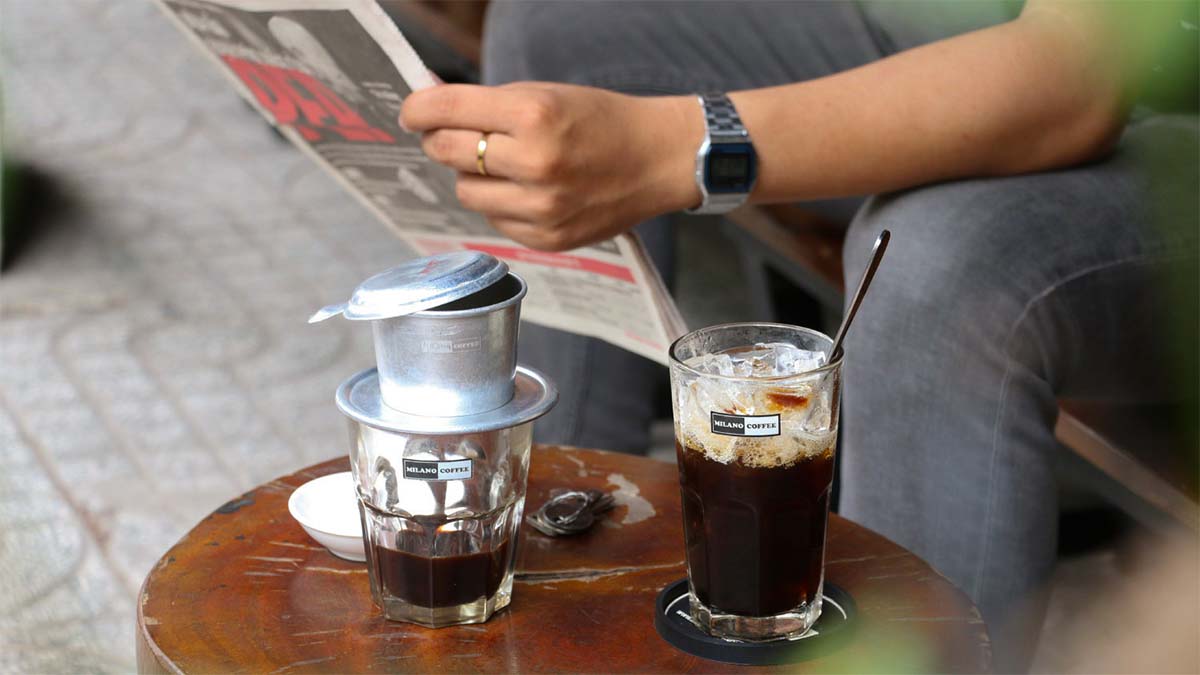
Beyond Caffeine: The Culture of Vietnamese Coffee
Focusing only on caffeine risks overlooking what makes Vietnamese coffee truly special. The brewing ritual is slow and deliberate, inviting you to pause as you watch each drop fall into the glass. The drink is also deeply tied to culture: enjoyed black, with condensed milk as the famous cà phê sữa đá, or transformed into unique creations like egg coffee, yogurt coffee, or coconut coffee.
Even the bitterness of Robusta, which some find overwhelming in other contexts, becomes part of the charm in Vietnam’s style. Combined with sweetened condensed milk, it creates a balance of bold and smooth that many coffee lovers find irresistible.
So, how much caffeine is in Vietnamese coffee? The answer is that a small phin serving usually contains 66 to 130 milligrams, which makes it one of the most caffeine-dense styles in the world. Thanks to Robusta beans, slow brewing, and dark roasting, it feels far stronger than a standard drip coffee, even if the total caffeine is similar.
For anyone curious about experiencing coffee that is both bold in flavor and powerful in effect, Vietnamese coffee offers an unforgettable introduction. It is not just about caffeine—it is about culture, ritual, and a style of brewing that continues to fascinate coffee lovers worldwide.
